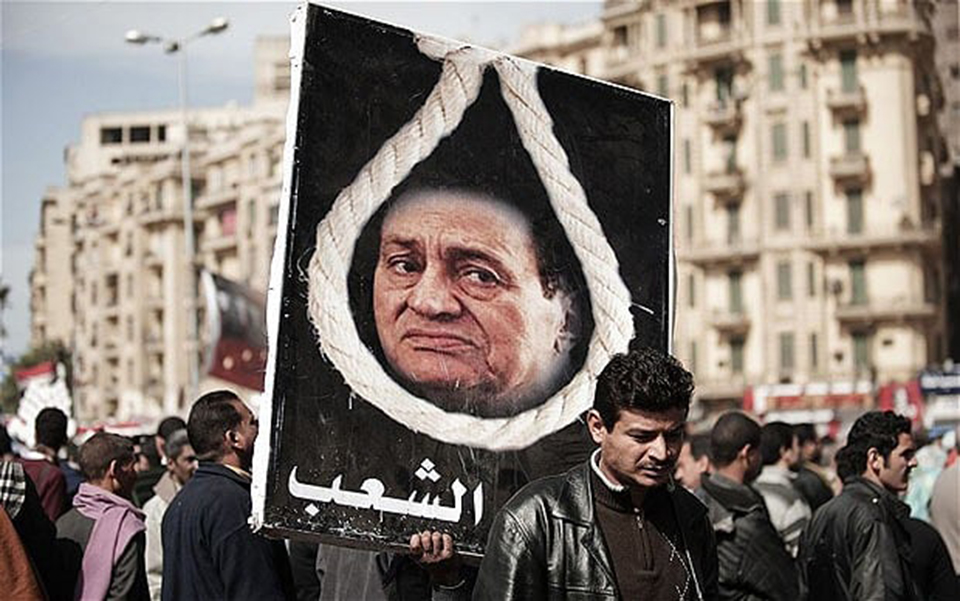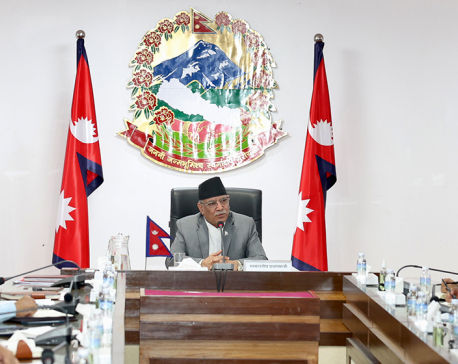
OR

When complacent autocrats do not respond to public protests, they face a revolution from below.
TEL AVIV: It has been more than six years since the start of the Arab Spring, and life for most Arabs is worse than it was in 2011. Unemployment is rife in the Middle East and North Africa, where two-thirds of the population is between the ages of 15 and 29. And throughout the region, regimes have closed off channels for political expression and responded to popular protests with increasing brutality.
The governments of Egypt, Saudi Arabia, and, to some extent, Morocco, epitomize Arab regimes’ seeming inability to escape the autocracy trap—even as current circumstances suggest that another popular awakening is imminent.
Egypt offers a classic example of how revolution often ends in betrayal. President Abdel Fattah el-Sisi's dictatorship is even more violent than that of Hosni Mubarak, the strongman whose 30-year rule was ended by the 2011 uprising. With the help of a police force that he himself describes as a “million-man mafia,” Sisi has made repression the paramount organizing principle of his regime.
It would be a Herculean feat for anyone to reform Egypt’s economy so that it benefits the country’s 95 million people (plus the two million added every year). And it is a task that Egypt’s leaders cannot avoid, because of the social contract of the Mubarak years, whereby Egyptians traded freedom for an expansive welfare state and generous subsidies, is no longer sustainable.
With youth unemployment at 40 percent, only a bold reformist president could pull Egypt back from the brink of economic disaster. Sadly, rather than providing hope to the younger generation of Egyptians who protested in Tahrir Square six years ago, Sisi has stifled individual initiative and made the army the primary actor in the economy.
Perhaps fearing even greater social unrest, Sisi has yet to meet the conditions set last November by the International Monetary Fund as part of a US $12 billion bailouts. These include drastically reducing the wage bill for Egypt’s bloated public sector, which still employs six million people (not counting the army and police); and reducing subsidies, which still constitute 30 percent of the national budget.
Moreover, Sisi has offered even fewer institutional channels for political expression than existed under the Mubarak-era one-party system. According to the Egyptian Centre for Economic and Social Rights, there were five times more street protests in Egypt in 2016 than there were, on average, in the years preceding the Arab Spring. A social volcano is forming; sooner or later, it will have to erupt.
In Saudi Arabia, the monarchical-theocratic regime weathered the Arab Spring with relative ease, because it could lavish its citizens with largesse. But the kingdom’s social contract, like Egypt’s, has become unsustainable, owing to falling oil prices and a population that has grown by more than 25 percent in the last decade alone.
Earlier this year, the Saudi government was forced to cut public-sector salaries and subsidies on basic goods. This represents a major risk for the regime (indeed, the salary cuts were quickly restored, after protests were called in four cities), not least because the state is the largest employer of Saudi citizens.
Many of the region’s autocrats have put their faith in the “China model” of non-democratic development. But that model has clearly failed them. It requires far too much socioeconomic and political regimentation to be workable under prevailing conditions in the Arab world.
This implies that Saudi Crown Prince Mohammed bin Salman’s ambitious plan to transform his country’s oil-based economy into a modern industrial economy will require a long and uncertain process. Economic reforms will succeed only if they are coupled with far-reaching political reforms, which would inevitably shake the regime’s foundation.
Like Saudi Arabia, Morocco, another monarchy, came through the Arab Spring largely unscathed. At the time, King Mohammed VI wisely responded to protesters by offering constitutional reforms and elections. But Morocco is now facing its own “Tunisia moment,” reminiscent of the street vendor Mohamed Bouazizi’s self-immolation in 2010, in protest against state harassment.
Bouazizi’s desperate act sparked the Arab Spring. And last year, Morocco experienced a gruesome echo of it when the merchant Mouhcine Fikri was crushed to death in a trash compactor while trying to retrieve fish confiscated by the authorities. Fikri’s death triggered a wave of protests across the northern Rif, a region with a long history of rebelliousness.
Revolutionary conditions often give rise to previously unknown leaders. In the Rif, a 39-year-old unemployed man named Nasser Zefzafi led protests that quickly spread to other parts of the country. Through online videos, he delivered fiery speeches in the local vernacular against government corruption and Morocco’s “dictatorship.” And on June 11, the capital, Rabat, was the site of the largest popular protest since the outbreak of the Arab Spring.
Unlike his father, King Hassan II, Mohammed has supported the region’s indigenous Berber culture and made investments to turn the Rif coastal region into a manufacturing hub. But progress has been erratic because the monarchy has maintained a tight grip on all government-led economic initiatives. Investments that were promised in 2015 have yet to materialize.
Still, Morocco’s monarchy has always been a step ahead of other Arab regimes when it comes to devising calculated responses to the popular mood. This political savvy, combined with the country’s improving economy, could help the regime weather today’s turbulence and the next violent upheaval. But the government will also have to follow through on the political reforms it promised in 2011; loosen its grip on the economy; and promote inclusive growth and prosperity, including by addressing deep regional disparities.
When complacent kings and “elected” autocrats do not respond to public protests with a controlled revolution from above, they inevitably face a much fiercer revolution from below. For the Arab regimes, neither the promise of subsidies nor the threat of repression can squeeze the political genie back into its bottle.
The author is a former Israeli foreign minister
© 2017, Project Syndicate
www.project-syndicate.org
You May Like This

Nepal's Forests in Flames: Echoes of Urgency and Hopeful Solutions
With the onset of the dry season, Nepal's forests undergo a transition from carbon sinks to carbon sources, emitting significant... Read More...

Live and let die, Sarkaar!
Some time ago, in a dazzling display of our Prime Minister’s political finesse, he revealed yet another populist spectacle; his... Read More...

'Victim blaming'- Nepali society's response to sexual violence
Multiple studies show that in most sexual assaults, the attacker is someone known and trusted by the victim. ... Read More...
Just In
- KMC to organize a month-long skill fair from May 1
- Birgunj Metropolis collects over Rs 360 million in revenue
- NEPSE plunges below 2,000 points after one and a half months; daily turnover declines to Rs 2.10 billion
- AI Index Report-2024: AI still behind humans on complex tasks like competition-level mathematics
- Daiji-Jogbudha road construction at snail’s pace
- Govt fails to adopt podway technology despite its potential in Nepal
- Jhulaghat border crossing in Baitadi to remain closed from this evening
- Universities will be free from partisan interests: Education Minister



















Leave A Comment